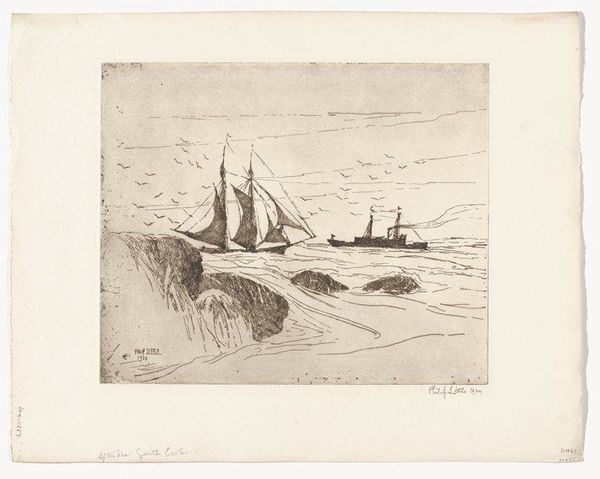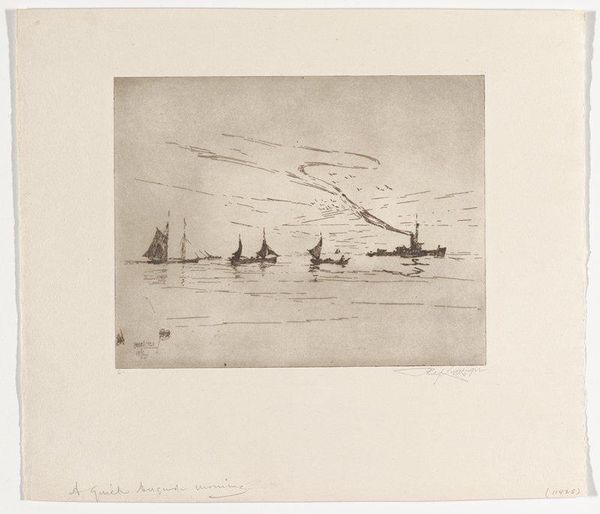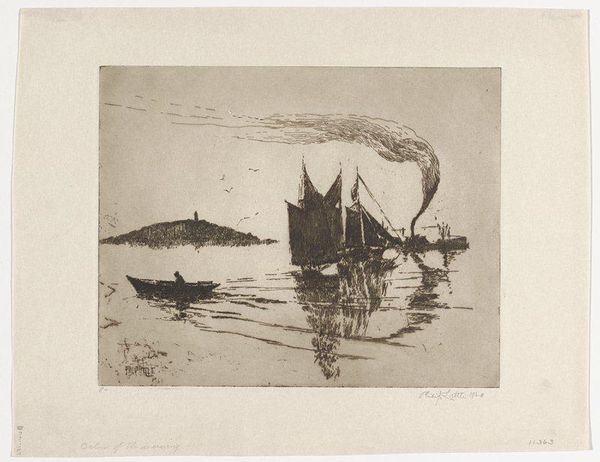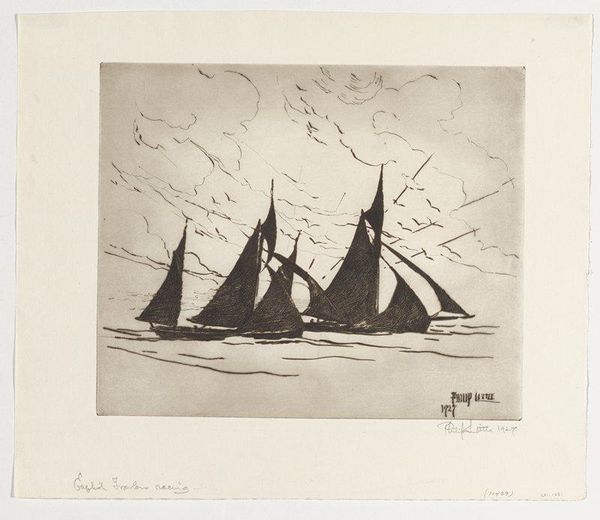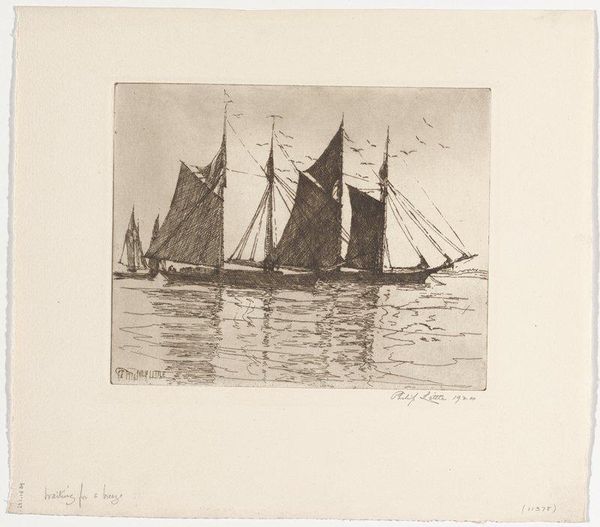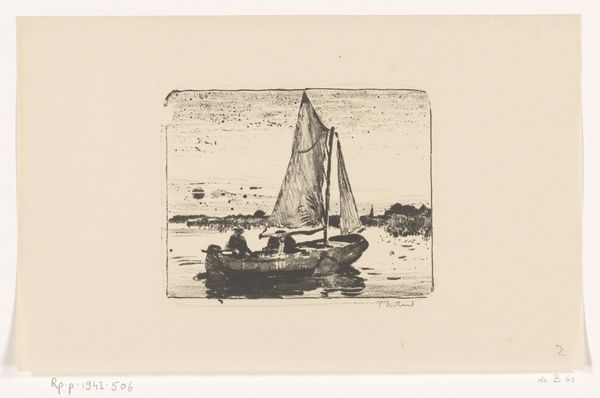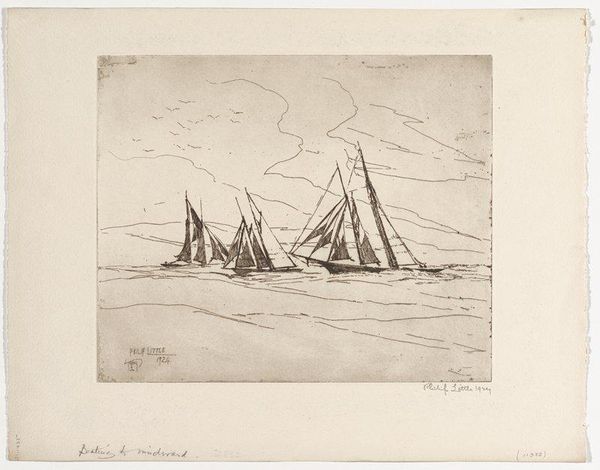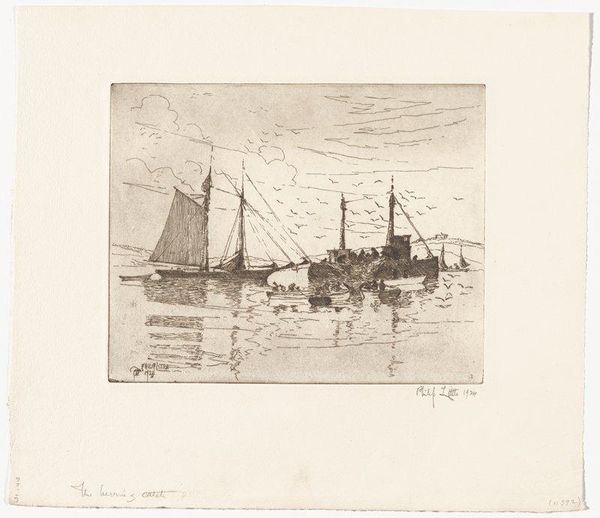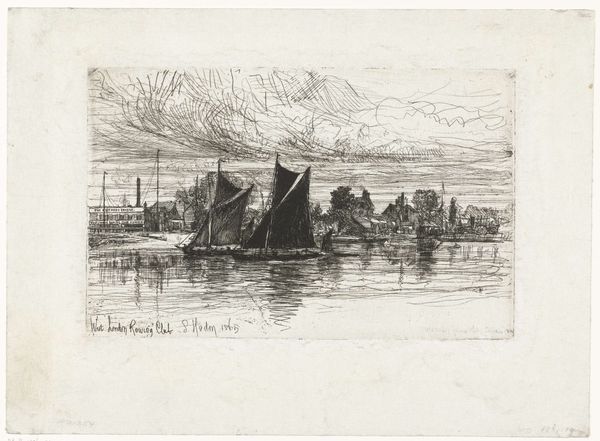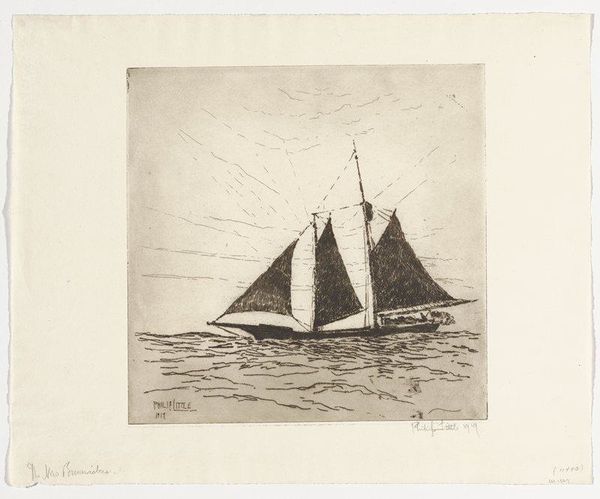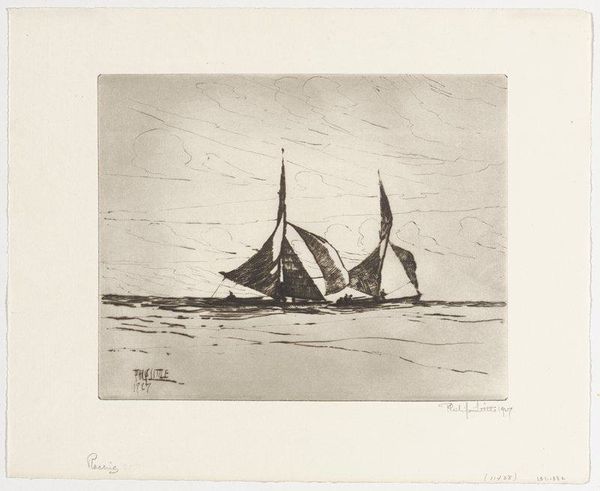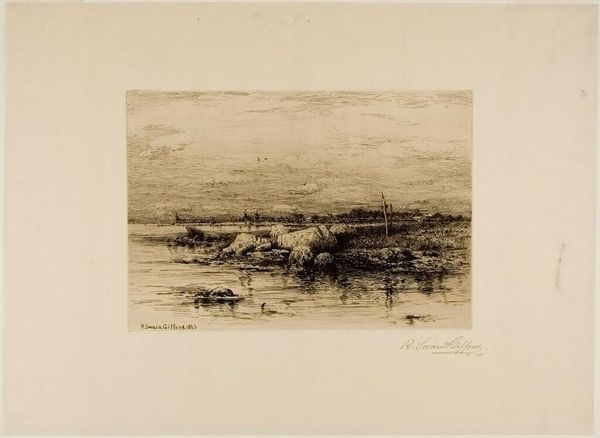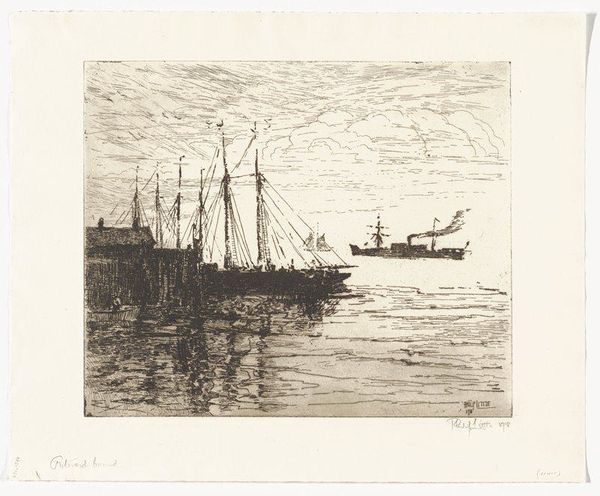
print, etching
# print
#
etching
#
landscape
#
line
Dimensions: 7 15/16 x 10 7/8 in. (20.16 x 27.62 cm) (plate)12 5/8 x 16 in. (32.07 x 40.64 cm) (sheet)
Copyright: No Copyright - United States
Curator: Welcome. Before us, we have "Coming Down with the Breeze" by Philip Little, dating to around the 19th century. The work is a print, using the etching technique, and is currently housed here at the Minneapolis Institute of Art. Editor: It's so spare! Just lines on paper, and yet it evokes such a strong sense of place. I see wind, movement, and depth achieved through minimal means. What catches my eye, initially, is its sheer formal elegance. Curator: The technique is essential. Etching allows for very fine, precise lines, and you're right; it’s impressive how much is communicated with so little. The cross-hatching, the varying densities of the lines... all contribute to that sense of atmosphere. Editor: Absolutely, and let's consider the socio-economic aspect. Prints democratized art. Etching especially offered a way for artists like Little to reach a wider audience, producing multiple originals rather than a unique, high-value painting. It reflects changes in material conditions and production processes. Curator: Interesting. I'm more compelled by how the artist used this medium to capture light, shadow, and the very essence of a seascape. Notice the way the masts of the boats reach for the sky, creating dynamic verticals, or the delicate curves suggesting cloud formations. These formal elements all construct a narrative beyond mere representation. Editor: While acknowledging the beauty, it’s imperative not to romanticize. Etchings involved skilled labor, both artistic and manual. Consider the acid biting into the plate, the press, the paper, and ink: each a material with a history and cost. It’s labor materialized, affordable yes, but still entangled in economic structures. Curator: Agreed, understanding the processes matters but for me, Little’s artistic choices, seen in light of, say, Impressionism’s interest in fleeting moments, or the rise of abstraction, make the print speak so much louder as its composition and form carry meaning in and of themselves. Editor: Perhaps. For me, appreciating the work fully means looking through the lens of materials, production, and social availability—these are equally crucial in understanding art history. Curator: A perspective well noted! And from which, I might now revisit some elements. Thank you. Editor: And I from yours! Considering both art history and material realities only enriches our view of the artist's choices.
Comments
No comments
Be the first to comment and join the conversation on the ultimate creative platform.
